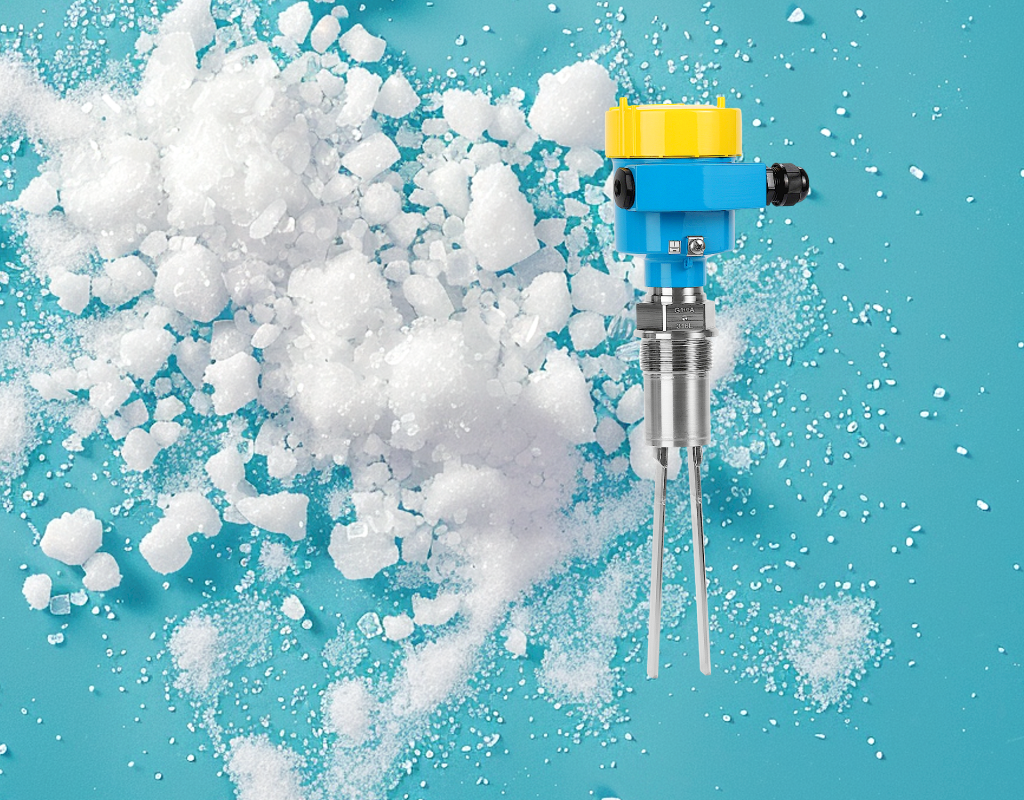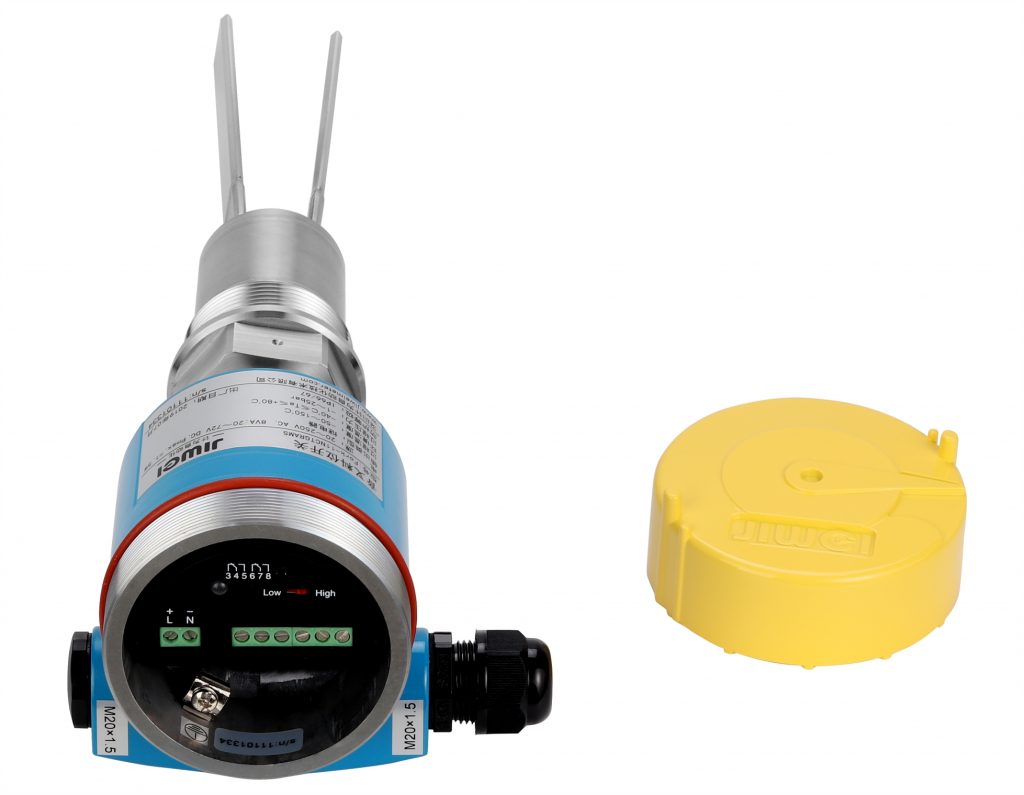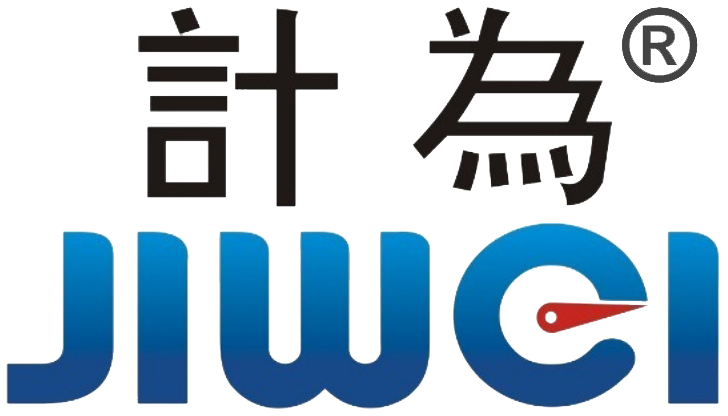Case Study: Application of Fork-11 Tuning Fork Level Switch in Measuring Butyl Rubber Powder
Case Background
JIWEI Tuning Fork Level Switch Fork-11 has been implemented in a rubber manufacturing plant to measure butyl rubber powder, a material widely used in tire production, sealing products, and insulation materials due to its unique physical and chemical properties. The fine particle size and highly sticky nature of butyl rubber powder make accurate level measurement during storage and transportation particularly challenging. Traditional measurement methods often struggle with powder buildup, adhesion, and poor flowability, leading to inconsistent readings and potential production issues. By deploying the Fork-11 Tuning Fork Level Switch, the plant achieved reliable and precise point-level detection, effectively preventing measurement errors caused by clumping or material adhesion. This solution not only ensures smooth material handling but also enhances operational efficiency, production safety, and overall process reliability.

Medium Characteristics: Butyl Rubber Powder
Butyl rubber powder has the following characteristics:
- Fine Particles: Particle size typically ranges from tens of microns to hundreds of microns, making it easily suspendable in air.
- High Stickiness: During transportation, the powder tends to adhere to the surfaces of pipes and equipment, causing buildup.
- Poor Flowability: The powder tends to clump in storage containers, resulting in poor flowability.
- Susceptible to Static Electricity: The powder easily generates static electricity during flow, exacerbating adhesion and clumping issues.

Measurement Challenges
- Powder Buildup and Adhesion: Traditional mechanical or capacitive level switches often fail in measuring butyl rubber powder due to powder buildup and adhesion, leading to inaccurate measurements.
- Poor Flowability: The powder’s tendency to clump in storage containers makes it difficult for level switches to accurately detect the true level.
- Static Interference: Static electricity can interfere with the stability and accuracy of electronic measurement devices.
Technical Advantages of the Fork-11 Tuning Fork Level Switch
- Anti-Adhesion Design: The Fork-11 tuning fork level switch uses a special coating and surface treatment technology to effectively prevent powder from adhering to the fork surface, ensuring accurate measurements.
- High Sensitivity: The tuning fork’s vibration frequency is highly sensitive to material changes, capable of detecting the slightest level variations, even in clumped powder conditions.
- Anti-Static Interference: The Fork-11 features built-in anti-static design, ensuring stable operation in static environments without interference.
- Maintenance-Free: Its simple design, with no moving mechanical parts, reduces maintenance needs, making it suitable for long-term use in powder environments.

Implementation Process
1. Site Survey and Solution Design
The technical team conducted a detailed survey of the butyl rubber powder storage and transportation system, understanding the structure of the storage containers, the flow path of the powder, and the physical properties of the powder. Based on this information, a tailored installation plan for the Fork-11 tuning fork level switch was developed to ensure accurate measurements at critical points.
2. Installation and Commissioning
During the installation process, the technicians followed the plan strictly to ensure the correct positioning of the level switch and secure connection with the storage containers. After installation, system commissioning was performed by simulating different powder levels to verify the sensitivity and accuracy of the Fork-11.
3. System Integration and Training
The Fork-11 tuning fork level switch was integrated into the rubber manufacturing plant’s automated control system, enabling real-time data transmission and monitoring. The technical team provided detailed training to the operators to ensure they could proficiently operate and maintain the equipment.
Performance Results
After a period of use, the Fork-11 tuning fork level switch demonstrated excellent performance in measuring butyl rubber powder:
- Accurate Measurement: The level switch provided reliable level data, effectively preventing production accidents caused by inaccurate measurements.
- Stable Operation: Despite the high stickiness and static environment, the Fork-11 operated stably without the need for frequent maintenance.
- Process Optimization: Through the real-time monitoring system, operators could promptly obtain level change information, optimizing the storage and transportation processes of butyl rubber powder and improving production efficiency.
Conclusion
The Fork-11 tuning fork level switch, with its anti-adhesion, high sensitivity, anti-static interference, and maintenance-free advantages, has demonstrated excellent performance in measuring butyl rubber powder. This case not only proves the technical advantages of the Fork-11 but also provides an effective measurement solution for other high-stickiness and easily clumping powders.
